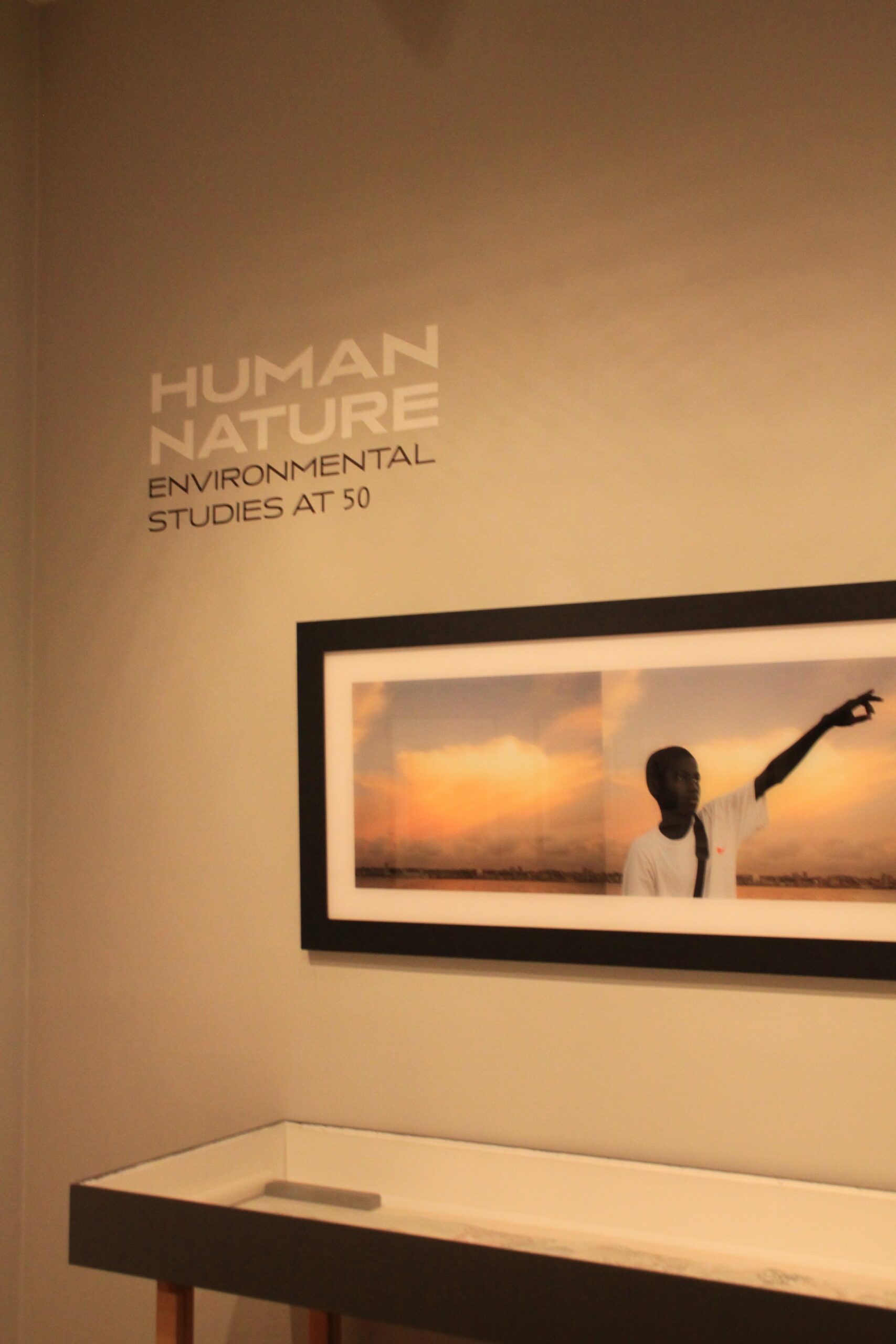BCMA exhibit challenges traditional depictions of the environment
April 7, 2023
 Lily Echeverria
Lily EcheverriaThe Bowdoin College Museum of Art (BCMA) recently unveiled the exhibit “Human Nature: Environmental Studies at 50.” The exhibit attempts to expand conventional ideas of what is part of the environment and celebrates the 50th year anniversary of Bowdoin’s environmental studies department.
At yesterday’s tour of the exhibit, curators Hayden Keene ’22, Sophia Hirst ’24, Tess Davis ’24, John Auer ’23, Brandon Lozano ’24 and Associate Professor of History and Environmental Studies Matthew Klingle described their process in creating the exhibit during an advanced independent study last spring. The group also commented on their desire to display pieces that challenge stereotypical depictions of a divine wilderness.
“When you think about the environment and art, images of … The Hudson River School come to mind, pictures of the sublime, where nature is very big and people are rarely included,” Auer said. “We wanted to think about how we can center people and the human experience in conceptual nature.”
One such piece is photographer Donna Ferrato’s “Christy Ferrato Unfettered,” which depicts the artist’s sister lying before a tree-lined, mountainous landscape.
“We decided to focus on representations of the body and nature that don’t necessarily emphasize the perceived separation between [the two],” Lozano said.
Artist Lucas Samaras’s “Sittings (Patterson Sims),” which depicts a naked Sims amidst a constellation of modern machinery and flashing lights, is perhaps the most provocative example of this focus, as it is indoors and has no obvious connection to the environment.
Klingle was initially skeptical when the students proposed making “Sittings” part of the exhibition.
“At first I was like, ‘What?’ But then some of the students said, ‘Look, the human body is a landscape, and this is about the reproducibility of the human body,’” Klingle said.
“This [piece] is a question of the material and the sublime and the machine and the human and artificial and natural and how humans might be part of this world and what that might look like in the era of the Anthropocene,” Keene said.
“It was a topic that I hadn’t really thought of before: bringing in all different aspects of life into what constitutes the environment,” Eshani Baez ’25 said.
The collection also considered what artifacts humans may leave on the planet should climate change significantly reduce or eradicate the human population.
Photographer Richard Misrach’s “Diving Board,” for example, contains an empty pool and diving board in front of the Salton Sea and a smoky, pink sky.
“‘Diving Board’ is more of a traditional post-human image with direct connections to ecological damage making land undesirable or uninhabitable, in this case, on the Salton Sea,” Hirst said. “Even though there isn’t a literal figure in the image, the solitary diving board in the center makes the landscape feel haunted by the absence of failure.”
Klingle said that he admired how much attention to detail the curators exhibited in choosing the show’s title, “Human Nature: Environmental Studies at 50”.
“It was the best kind of academic or collegiate discussion because we spent about a week or two [discussing]: should human nature be one word? Should it be one word but with a capital N? Should it be a word with a slash? Should it be a dash? A colon?” Klingle said. “And it sounds kind of ridiculous, but it points to the level of engagement with details.”
Klingle said that overseeing the exhibition gave him a sense of pedagogical fulfillment that is often elusive.
“What was amazing for me as a faculty member was to see unfolding before me the products of education and how students took the ideas that I and my colleagues in environmental studies plus elsewhere on campus [teach] and build upon these ideas and make a statement that is their own,” he said. “That is incredibly gratifying.”

Comments
Before submitting a comment, please review our comment policy. Some key points from the policy: